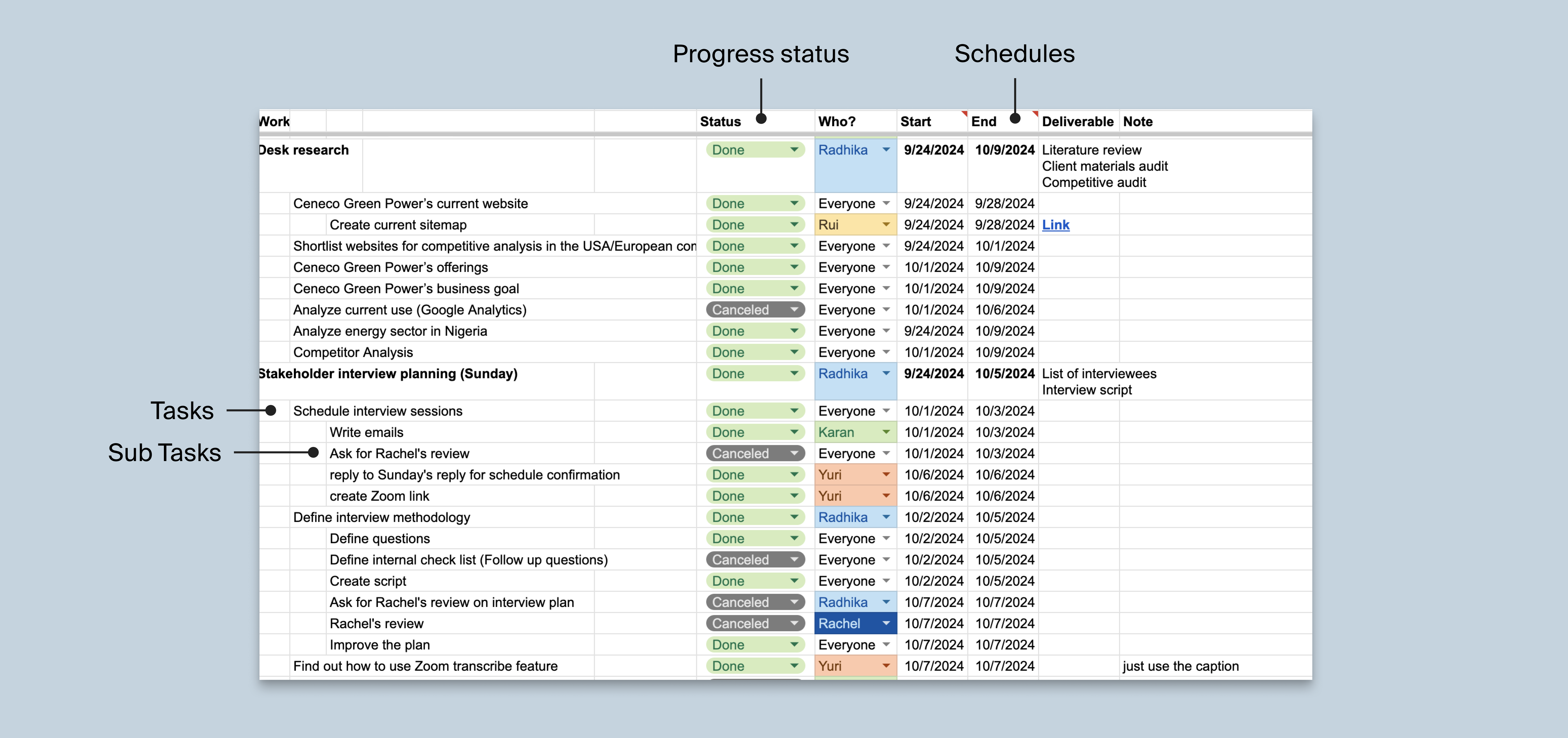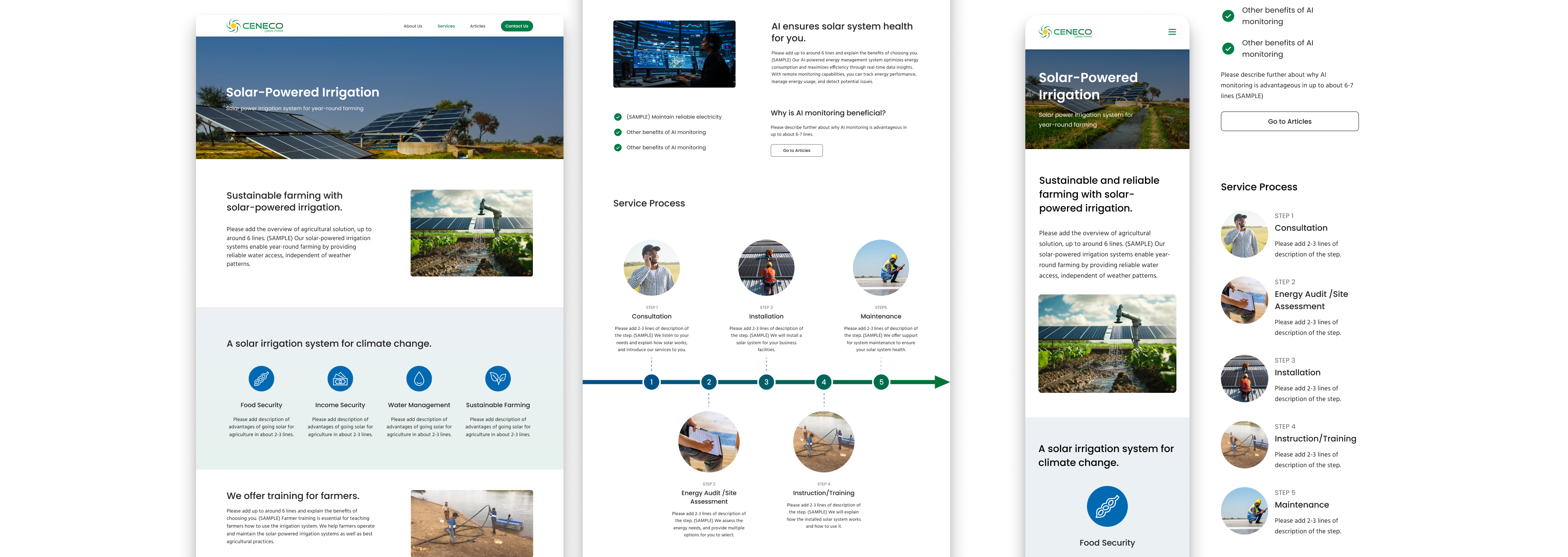
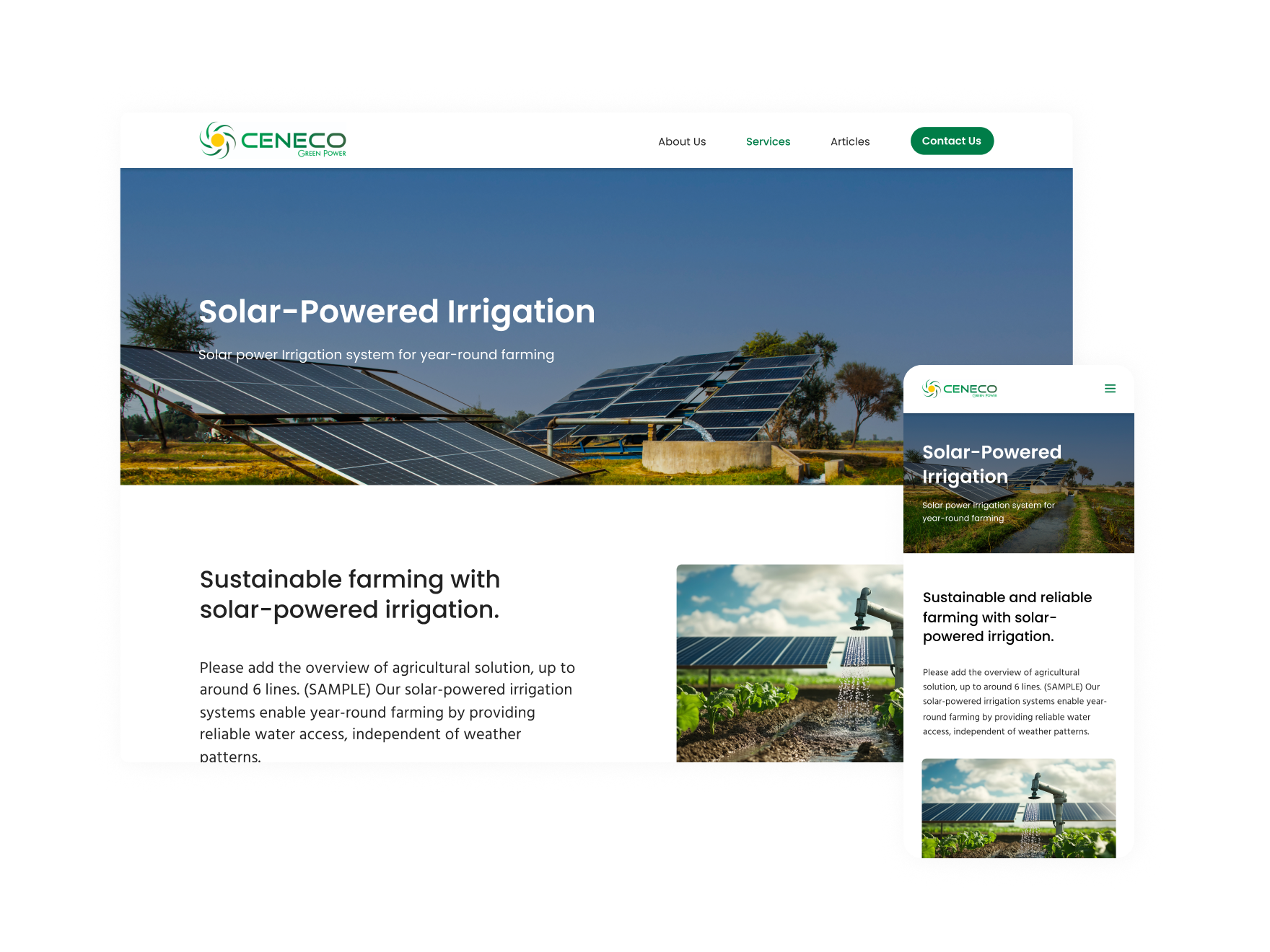
Redesigning a Nigerian solar company's website
How I collaborated within regional and resource constraints, resulting in strong client satisfaction and buy-in
Redesigned the website for a Nigerian solar company transitioning into a tech-driven leader
Ceneco Green Power, a Nigerian solar company, specializes in solar system installation and maintenance for residential, commercial, agricultural, off-grid use, and EVs. The company is rebranding as an African solar tech leader, leveraging AI and IoT. Our mission as UX consultants was to redesign the website.
While the business thrives on word of mouth, the website wasn't performing as well
Site analytics revealed low traffic (50 users/month) and a high bounce rate (68%), indicating poor customer acquisition through the website. We identified 3 underlying issues that needed to be addressed.
We had regional and resource constraints
Balancing alignment with industry standards and originality is key for solar websites
With no direct access to Nigerian customers, we adjusted our research approach. In place of user interviews, we analyzed the websites of 9 solar companies across Nigeria, US, and Europe, and interviewed the client’s CEO and COO to understand the industry, their business, customers, and the Nigerian context.
.png)
Our competitive research showed that most competitor websites looked similar, highlighting both a common direction to follow and the importance of differentiation. Interviews showed that the company values transparency and strives to communicate its strengths to customers with limited knowledge of solar energy.
Derived 4 strategies to guide our design
Synthesizing our research, we derived the following strategies.
Held a workshop to incorporate the client's needs and align on website content volume
We conducted a workshop with the client to consider what information to include on each page using a typical competitor sitemap as a reference. After this, we made the sitemap using the result (View Sitemap).
.png)













.png)
%20(1).png)


%20(1).png)

We designed pages for both desktop and mobile

Making the website more unique and appealing
After creating the version 1 prototype, we gathered feedback from 4 users and refined the design. Below are some of the key improvements.
Our initial color palette felt too generic and lacked a technological feel, so we introduced 2 gradient palettes, one in dark blue-green and one in light blue-green, to make the visuals more distinctive.
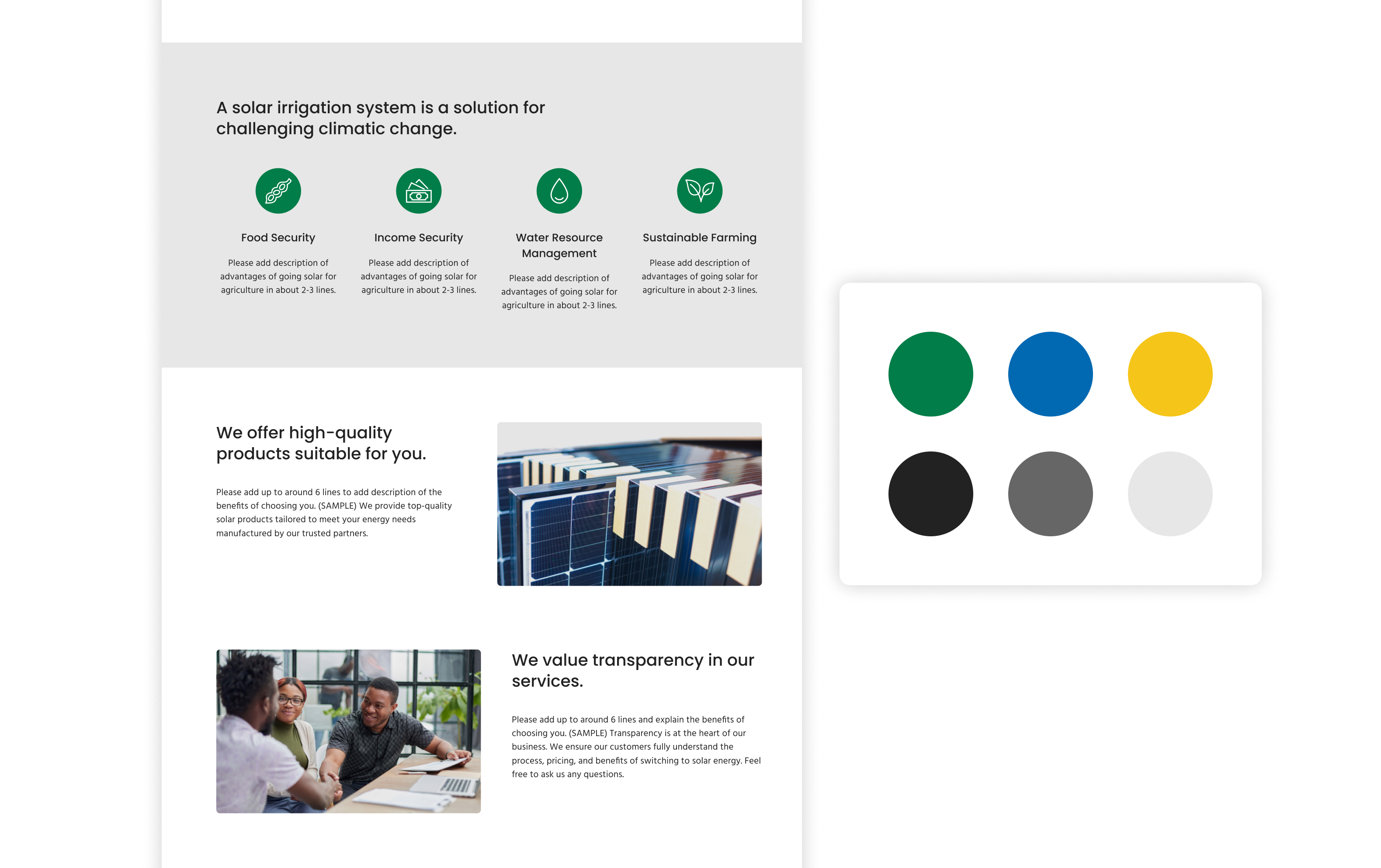
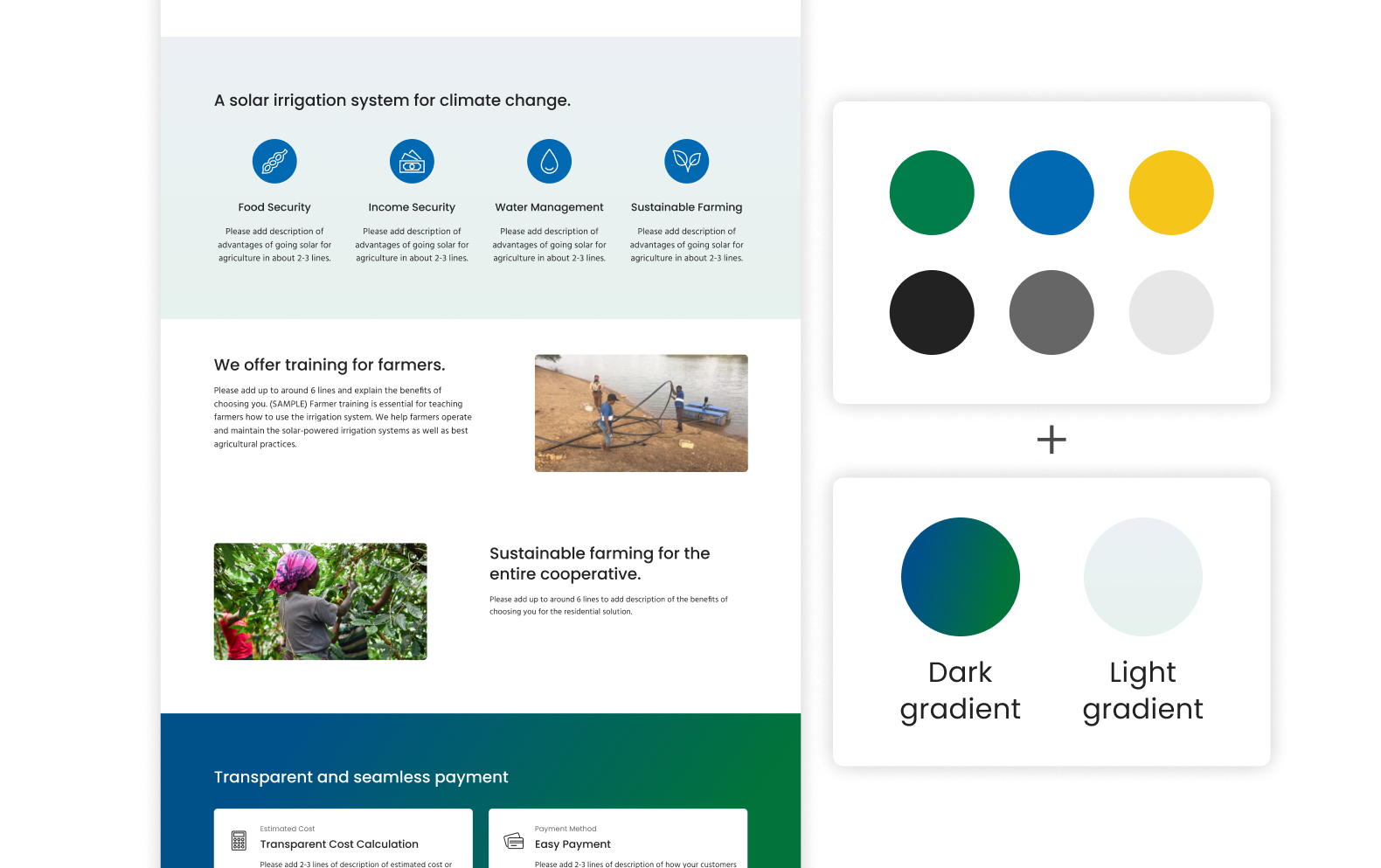
The service process section is important for understanding the offerings, but the initial design did not convey a clear sequence, which made it easy to overlook. I redesigned it to clearly communicate the flow.
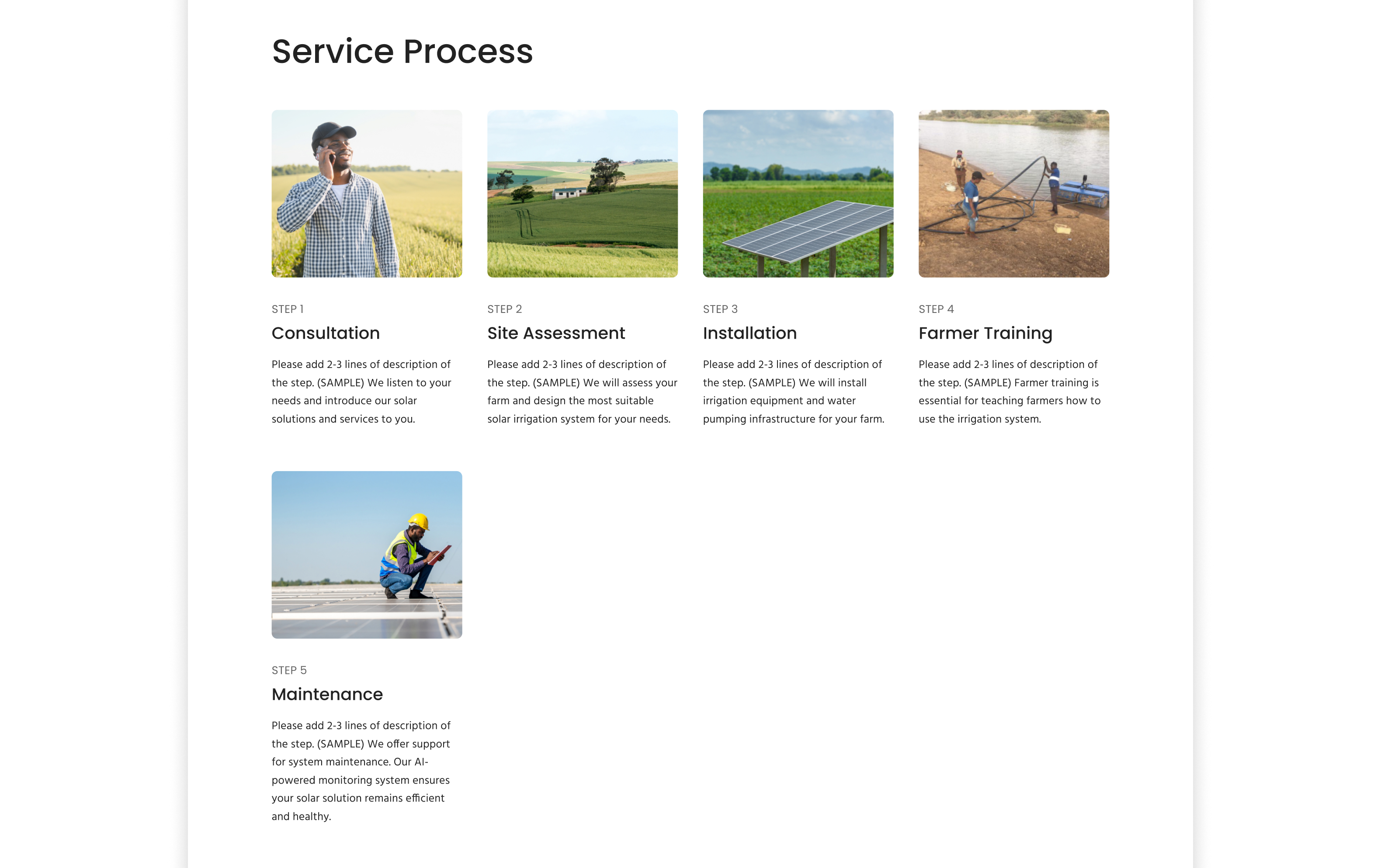
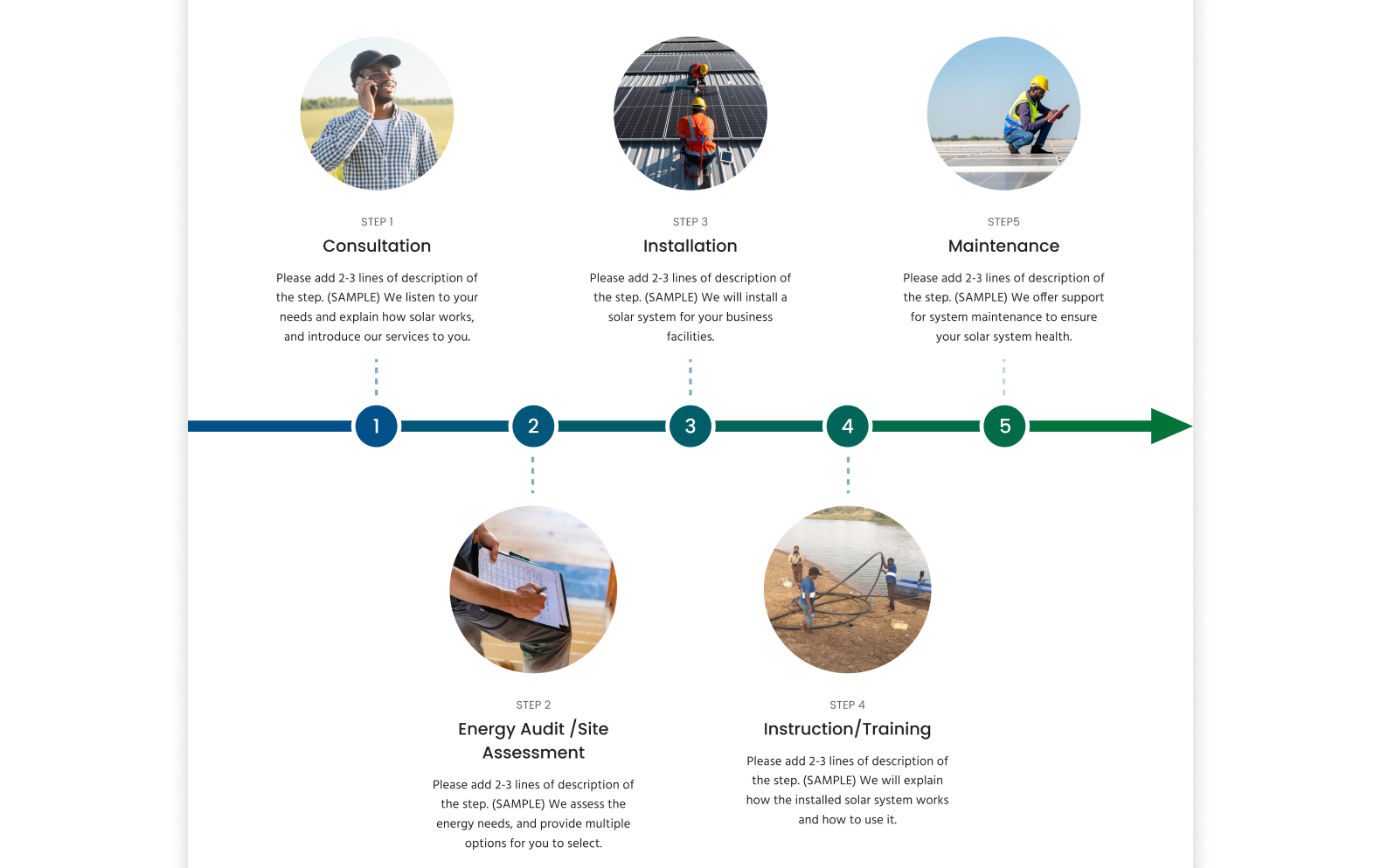
The stock images were visually appealing but we got the feedback that the design feel generic and lacked human touch and authenticity. To reflect the real identity, I added a project gallery using clients' real images.
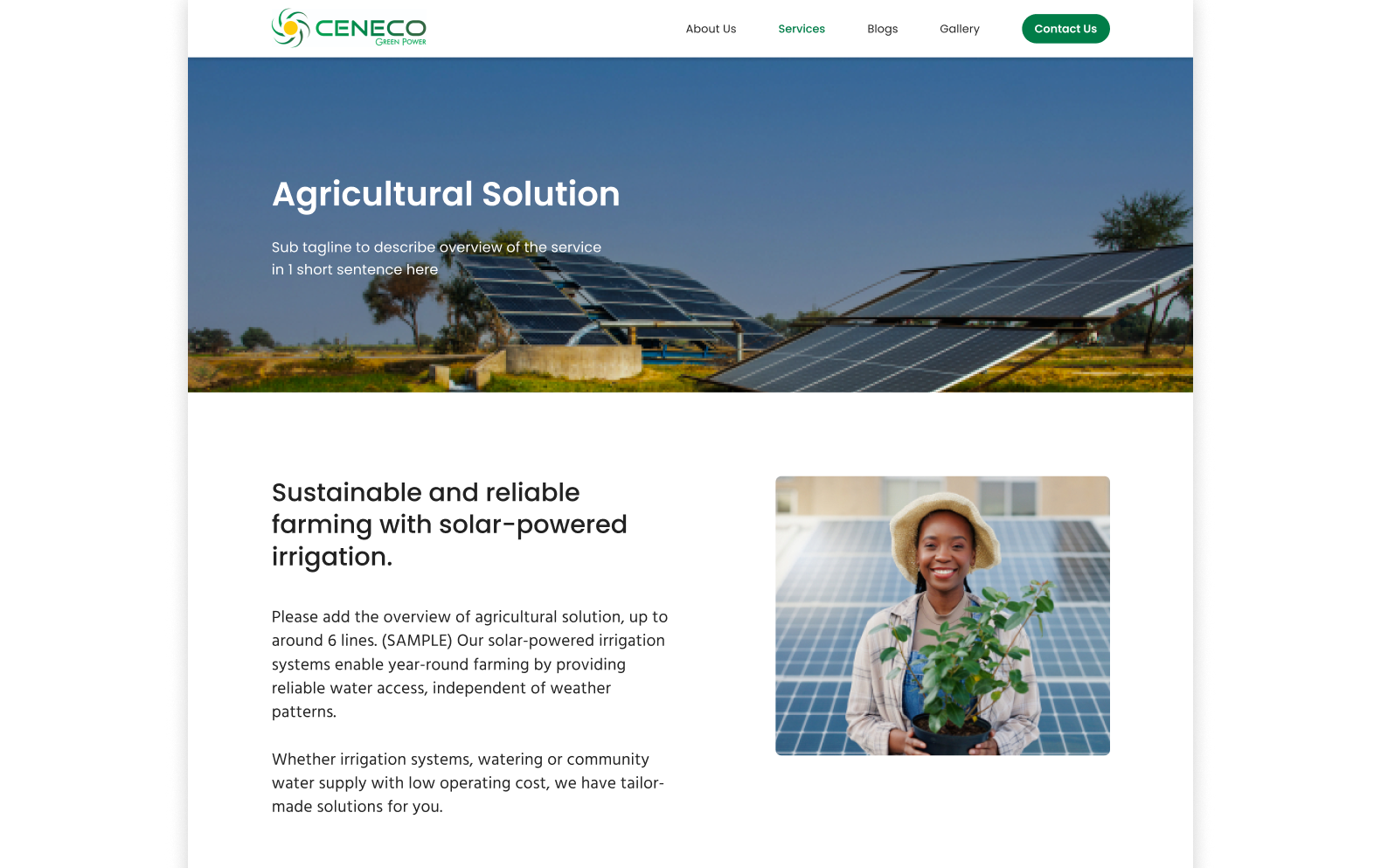
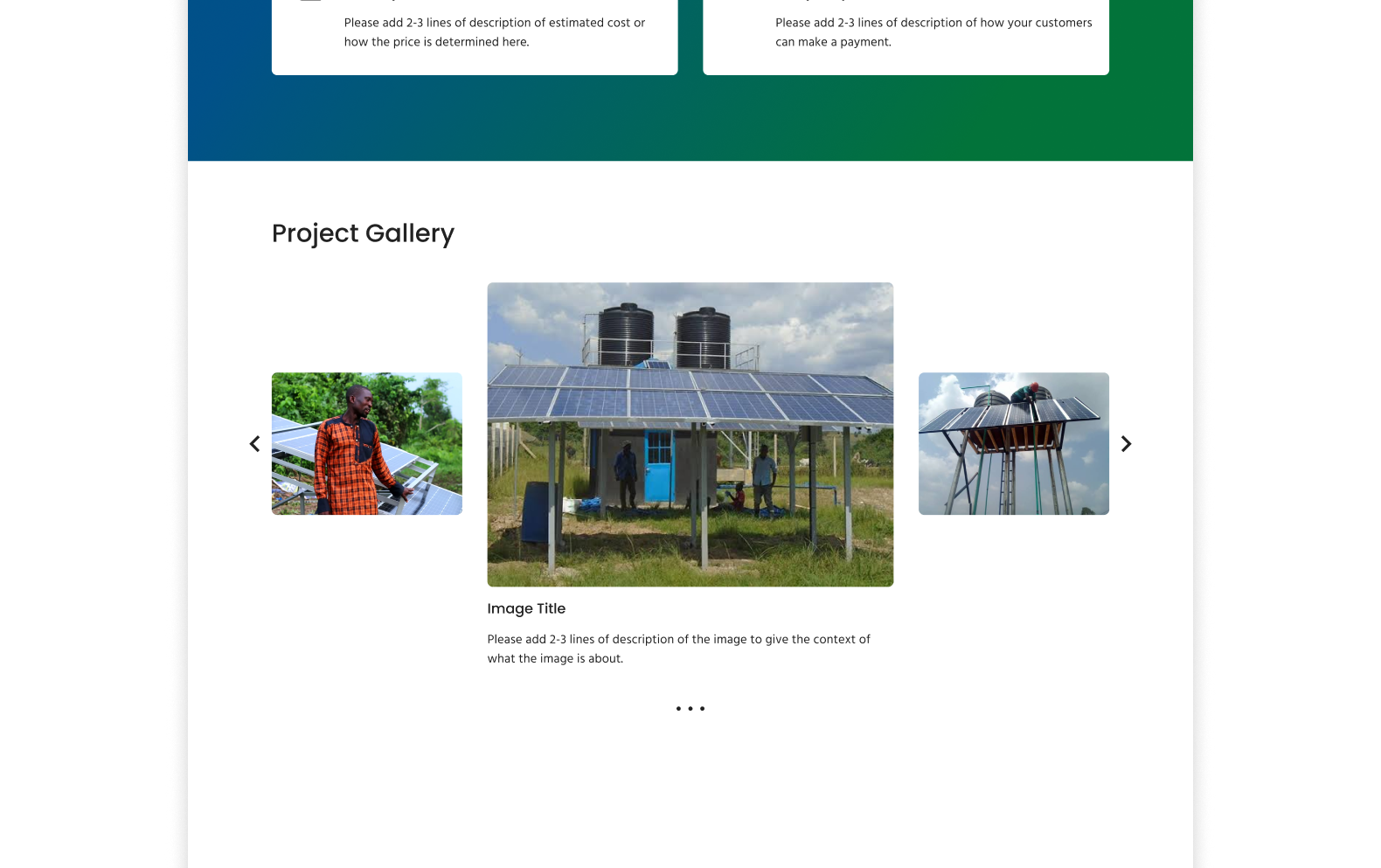
Supported implementation and scalability with a design guide
As a former software developer, I recognized the importance of communicating design to non-designers. This led me to create design guides that included visual design guidelines, content guidelines (section purposes and tips for engagement), implementation resources, and an asset list.
%20(1).png)
Our collaborative approach resulted in strong client satisfaction, buy-in, and implementation
With our design and collaborative approach, the client was satisfied with our work and adopted the design. After the project, they updated their website, which has positively impacted their business, including favorable feedback from customers. We are also confirming the quantitative impact, such as analytics data, with the client.
.svg)
.svg)
.png)
I learned the importance of adapting the design process within constraints
Regional barriers made this project challenging, with limited user access and client communication. We overcame this by using alternative research and design methods, which taught me to adapt strategically when the full design thinking process isn’t feasible.
I also learned the value of having a PM mindset, even as a designer. Since we began with an exploratory approach, we had to define the process, break down tasks, and set a schedule to stay on track. I contributed by organizing tasks in a shared spreadsheet, which helped the team stay aligned and reduced uncertainty.
